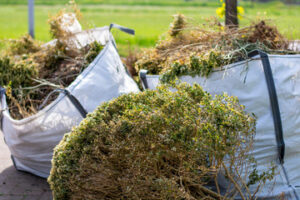Green Waste includes items such as grass clippings, leaves, and food scraps. It can be recycled into compost or used to create energy.
It can also be used to enrich soil or mulch gardens and public spaces. The biggest benefit of Green Waste Collection Mandurah is keeping it out of landfills.
Many people are familiar with recycling, the process of reusing materials that would otherwise be discarded as waste. The concept is fairly simple: Rather than throwing away paper and plastic, for example, you can recycle them to produce new items. In practice, the process is much more complex and requires a substantial amount of effort. Recycling also has the potential to save valuable natural resources and reduce environmental harm.
 During the 1980s, when public awareness of environmental concerns was rising, many cities made efforts to increase recycling rates. Today, recycling is commonplace for most households and some businesses as well. Many municipalities even provide curbside recycling bins. The waste from these bins is typically sent to recycling facilities, where it is sorted and cleaned. This helps to ensure that only high-quality, reusable material ends up being recycled.
During the 1980s, when public awareness of environmental concerns was rising, many cities made efforts to increase recycling rates. Today, recycling is commonplace for most households and some businesses as well. Many municipalities even provide curbside recycling bins. The waste from these bins is typically sent to recycling facilities, where it is sorted and cleaned. This helps to ensure that only high-quality, reusable material ends up being recycled.
Most people are familiar with the typical materials that can be recycled: glass, metal, paper, plastic, and cardboard. However, many people are unaware that green waste is also recyclable. It is possible to recycle organic matter such as yard trimmings, food scraps, and other household wastes to make compost, which is then used to nourish plants and soil.
Green waste can also be sorted and turned into a renewable energy source, using anaerobic digestion. This can help to reduce the amount of fossil fuels that are needed to create electricity, and it is an environmentally responsible way to use organic waste.
While traditional recycling is one of the most commonly known types of waste reduction, it is not a panacea. It is only a very small part of the overall waste reduction process, and even this has its limits. It is important to work with your building’s management team to develop a comprehensive plan for waste reduction that includes recycling and other techniques. It is also recommended that you recruit a diverse team to help with planning and implementation, as this will offer a broader range of perspectives and problem-solving approaches. This team will also be better positioned to identify additional opportunities for improvement within your organization.
Composting is a natural process that recycles organic materials back into the soil. It is a process of controlled aerobic decomposition, utilizing microorganisms, such as bacteria, fungi, and earthworms, to break down organic solid wastes into a humus-like material that acts as a natural fertilizer for plants. This is an environmentally superior alternative to landfilling, as it reduces methane emissions (produced by anaerobic conditions in landfills) and provides economic and environmental co-benefits. Compost can also be used for land and stream reclamation, wetlands construction, and landfill cover.
A green bin program is a convenient option for those who wish to divert their kitchen and related organic wastes from garbage collection. Waste organics are collected in waist-high, green curbside containers and transported to an industrial composting facility. This is an efficient way to manage organics and avoid the need for waste disposal, which would require additional trucks and vehicles on our streets and highways.
In addition to convenience, a green bin program is a great way to reduce greenhouse gases. Sending food waste to an industrial composter rather than a landfill will prevent that waste from releasing methane into the atmosphere, but it is important to remember that the entire collection and transportation system will produce GHGs.
Composting involves a complex mixture of “greens” (rich in nitrogen, such as grass clippings, weeds, and some kitchen scraps) and browns (rich in carbon, such as leaves, straw, and twigs). Bacteria and fungi, working under moderate temperatures, break down the organic materials, turning them into humus. This can take months and requires regular shredding and aeration of the mixture, as well as water and a good mix of carbon and nitrogen-rich materials.
In the Department of Environmental Protection regulates composting facilities with a permit or registration, depending on location, volume, and type of material being processed. Commercial organics composting operations in the state must comply with 6 Part 361-3.2 or be exempt from regulation. Smaller-scale home-based composting is regulated by private trade associations within the industry, which have set loose standards that are not consistent with government regulations.
As the world moves away from fossil fuels and toward renewable energy, green waste collection becomes even more important. Unlike solid waste that takes days to centuries to decompose in landfills, green waste breaks down aerobically into compost. This reduces greenhouse gas emissions, which are a major cause of global warming. It also makes soil richer for future agricultural use and provides a valuable source of carbon dioxide.
Food scraps and organic matter can also be processed into a clean, renewable fuel called biogas or methane, which is used to produce heat and electricity. This replaces the use of conventional fossil fuels like coal, oil, and natural gas, which are a significant source of climate change.
To generate biogas or methane, the waste is digested in specialized facilities. This process releases 50-70% methane, which can be captured and reused. Often, this is done in anaerobic digesters, which create a useful product as well—organic manure. This can be used in agriculture or to supplement natural gas supplies.
Many cities are beginning to offer a variety of organics collection options for their residents. Some programs include brown bins to collect food waste and a biweekly pick-up of green bags filled with vegetative yard waste such as leaves, brush, and grass clippings. Other systems may allow citizens to drop off organics at grocery stores or other community locations.
As with recycling and composting, processing is a major cost driver for green waste collection. According to IBO, organics processing costs currently exceed the cost of exporting refuse to landfills. If more non-organics were separated from the organics stream, this would lower processing costs.
A company in is attempting to create an environmentally friendly, large-scale waste-to-energy plant that will turn garbage into energy. The plant uses Canadian patents to convert municipal solid waste (MSW) into a synthetic gas, known as syngas. This is then fed to an engine or turbine to create green electricity.
Creating an organization-wide is an effective way to identify and implement green waste reduction strategies. Recruit members from a variety of departments or offices, as this will provide different perspectives and problem-solving techniques. The team should meet regularly to set short and long-term goals for reducing waste. Tracking waste, water, and energy data over time can help your organization understand its performance and make improvements in these areas. ENERGY STAR Portfolio Manager is a free, easy-to-use tool that allows users to manage this information in a secure online environment.
Mulching is the application of a layer of organic material such as grass clippings, leaves, or wood chips over the soil. This material acts like a barrier that prevents weeds from growing and adds nutrients to the soil as it decomposes. It helps to retain moisture and regulate soil temperature, so it’s a great addition to any garden. Plus, it’s an eco-friendly alternative to buying fertilizers at the store.
Mulches can be made of either organic or non-organic materials. The most common organic mulches are plant residues, compost, and manure (Green and Watson 1989; Pfammatter and Dessimoz 1997). Non-organic or synthetic mulches include polyethylene plastic and landscaping fabric.
The use of organic or natural green wastes for mulching can reduce the need for chemical herbicides. It also increases microbial activity in the soil and makes it healthier for plants to grow. It can increase crop performance, improve the quality of soil, and contribute to a healthier environment for animals, insects, and people.
It is a great way to prevent soil erosion and help protect against winter frosts. It can also prevent water runoff during heavy rains or droughts and protect the roots of trees from excessive heat. It can also help to reduce the amount of time needed to water and weed gardens.
Organic mulches, such as straw, hay, and leaves, have higher levels of nutrients than synthetic or inorganic types of mulch. They can also encourage earthworms to move in and occupy the soil, which helps with soil structure and nutrient cycling. In addition, they can inhibit fungi that cause disease in the plant, such as Armillaria and Rhizoctonia.
A thin layer of organic matter can increase the microbial population in the soil and promote root growth, especially when placed around young plants. This can reduce the need for watering and weed control, and it can prevent the loss of nutrients to the soil by wind. Additionally, organic mulches can increase the nutrient availability to the plant, resulting in greater yields and quality. Low-nitrogen-rich organic materials, such as straw and husks, have been found to increase nutrient availability in plants and soil compared to grass or sawdust mulches with higher nitrogen content (Arthur and Wang 1999; Singh and Saggar 1997).
